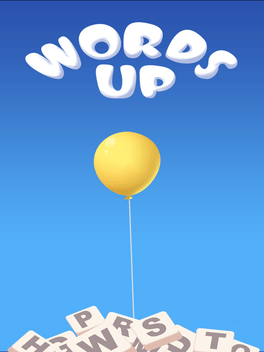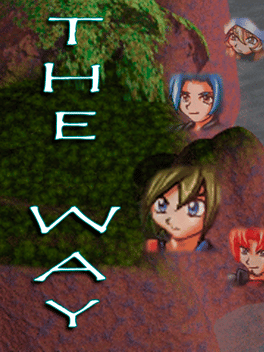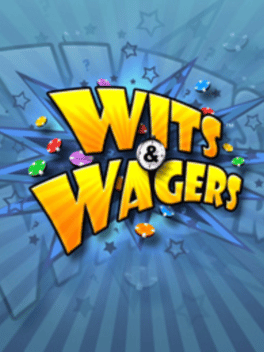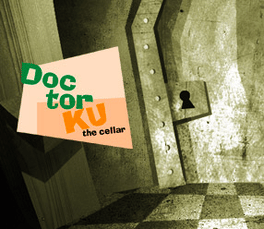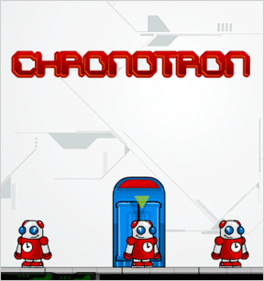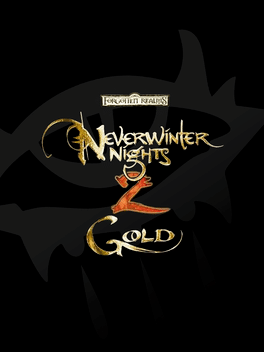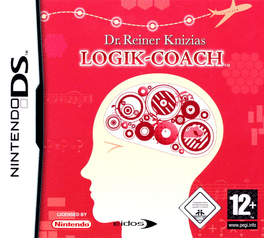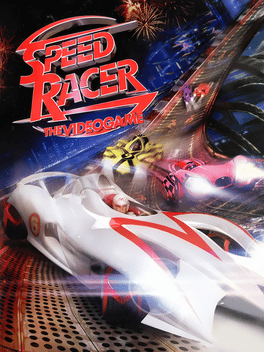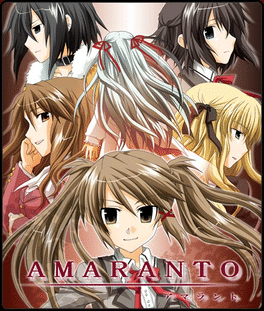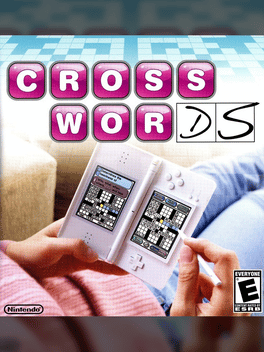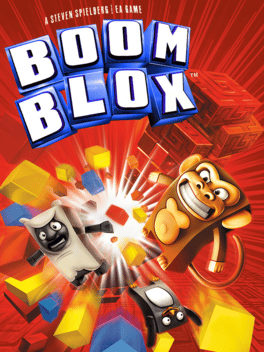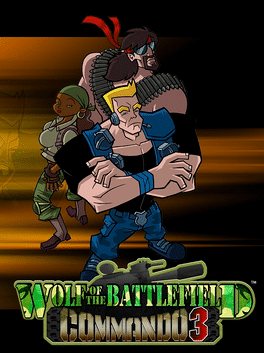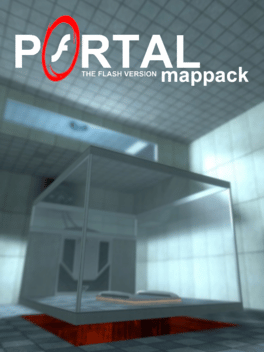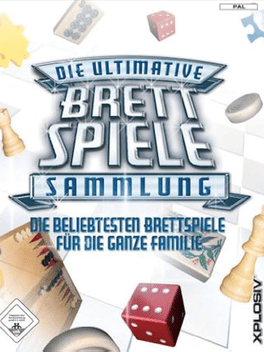New Games - Page 9977
-
Words UP
2008
Words UP
2008
Words UP offers brain challenging fun, super addictive gameplay, beautiful graphics and relaxing background sounds. Just need to find the words that are hidden and by connecting letters to form words to complete a level. Also find as many extra words as you can find in every level which are hidden and don't present on the crossword board to collect bonus points. -
The Way
2008
The Way
2008
An independent RPG made by Crestfallen Studios that was broken up into 6 chapters. It gained a small cult following among the RPG Maker community. The story begins with a first glance at the "protagonist," Rhue. He has been searching all along "The Way" which is the name given to the world of this game by his childhood friend, whom was separated from him many years earlier. His travels take him to many settlements, he meets a very wide and varied cast of characters, and has adventures ranging from dungeon crawling, to stopping sieges, to tournaments and even some acting! Meanwhile, a mysterious killer wreaks bloody havoc, and dark things stir in the Reaches. As the Way's mysteries are slowly revealed, Rhue follows the trail through mountain and forest and fire—and learns more about himself and the world he lives in than he's ever wanted to know... -
Wits & Wagers
2008
Wits & Wagers
2008
star 5Wits and Wagers is an Xbox Live Arcade game that brings the fun of Trivia games to your Xbox 360. The game boasts over 700 questions and you can either play with up to 4 people on your xbox, or go online for even more fun. -
High School Musical 2: Work This Out!
2008
star 4Take control of a High School Musical character and adventure through a resort while listening to music from High School Musical 2 -
Music Bounce
2008
Music Bounce
2008
The object of the game is to use bouncing balls to clear all the notes on a stage. Each level has a maximum amount of ball gates you can open. Once you’re done with the game’s 50 levels, check out letsmakeagame.com to play user-created levels and make your own! -
Chronotron
2008
-
Neverwinter Nights 2: Gold
2008
star 8Neverwinter Nights 2 Gold combines Neverwinter Nights 2, the sequel to one of the best-selling and genre-defining role-playing games ever, and Neverwinter Nights 2: Mask of the Betrayer, which allows you to advance to epic levels (above 20) and choose from over 100 spells. -
Brain Voyage
2008
Brain Voyage
2008
star 5Brain Voyage features the famous German board game designer Dr. Reiner Knizia. He guides the player on a world tour through 13 different cities and explains how every puzzle works. -
Speed Racer: The Videogame
2008
star 6.9In Speed Racer, players take on the role of the characters from the film, getting behind the wheels of each character's signature vehicles to experience firsthand the film's high adrenaline, combative racing style. Perform tricks and pull off insane stunts through incredible, twisting stadium tracks, all while fighting against rival racers with incredible Car-Fu action. -
Amaranto
2008
Amaranto
2008
Set in a post-apocalyptic world divided into districts, Mio and her childhood friend Shizuku hears strange rumors at school about "vampiric" murders. Who is the culprit, and how does it tie to that mysterious girl in white? -
CrossworDS
2008
CrossworDS
2008
Crosswords DS supports up to four different players, and features two basic modes - Training and Main Game. The main game includes three classifications of puzzles - Crosswords, Word Searches, and Anagrams. The game uses similar handwriting mechanics to solve the puzzles as the popular Brain Age series of video games, as well as requiring the player to hold the Nintendo DS like a book. All three puzzles have varying difficulty levels, all of them featuring unlockable puzzles and difficulty levels. -
Boom Blox
2008
Boom Blox
2008
star 8.1Boom Blox is a action puzzle game developed in conjunction with Steven Spielberg. The objective of Boom Blox is to keep a structure made of blocks from being knocked down or to knock over a structure using the Wii Remote to throw, shoot or grab colorful character-based blocks through 300 levels through five worlds. The game utilizes a realistic physics-based system. Depending on how a projectile is thrown and at what angle, the blocks will react accordingly, and collapse based on the real-time action. -
Wolf of the Battlefield: Commando 3
2008
star 6.6The classic series responsible for Commando and Mercs returns as a downloadable dual-joystick shooter from Capcom and Backbone Entertainment. -
War Operations
2008
War Operations
2008
star 4Go on secret missions in solo or co-op mode with another human player. Destroy military installations and rescue hostages in this fast paced 3D FPS game which requires all of your skill and wit to complete! Intelligent AI enemies guard the bases and will react to even the smallest sound. Be careful and try to get out alive in this epic game of War and Destruction! -
Mystery P.I. - The Vegas Heist
2008
The heist of the century has just happened! You've been hired by the casino to find and return the stolen money before its grand opening in 16 hours. Search for over 2300 cleverly hidden objects in 25 intriguing locations to solve the Vegas Heist. Two addictive ways to play: Vegas Heist mode and Unlimited Seek & Find mode. Collect all the hidden Keys and Poker Chips to unlock the bonus mode. Find the clues, solve the Vegas Heist. -
Portal: The Flash Version MapPack
2008
Portal: The Flash Version MapPack is a remake of the namesake Flash fan game for Portal. Some of its chambers were included in Portal: Still Alive. -
Bounce Back
2008
Bounce Back
2008
Bounce Back Java Game Bounce game with different levels The legendary game Bounce is back! The game is funny and fascinating. The game is supported not only by Nokia, but also by other mobile phones! -
Die ultimative Brettspiele-Sammlung: Die beliebtesten Brettspiele für die ganze Familie
2008
The collection contains 20 classic board games with entertainment for the whole family: Chess, Connect 4, Checkers, Brain Teaser, Backgammon, Reversi, Ladders and Snakes, Battleship, Pachisi, Dice, Dominoes, Go, Halma, Word Dice, Mahjong, Anagrams, Memory, 3D Tic Tac Toe, Mancala, and Puzzles. Whether for fun against the computer or with the family in the evening, the Ultimate Board Games Collection offers fun for all ages! Many games feature unique video sequences that add atmospheric accompaniment to the gameplay. -
Rollercoaster Creator
2008
Use your mouse to draw a path that collects the required coins and reaches the exit.

